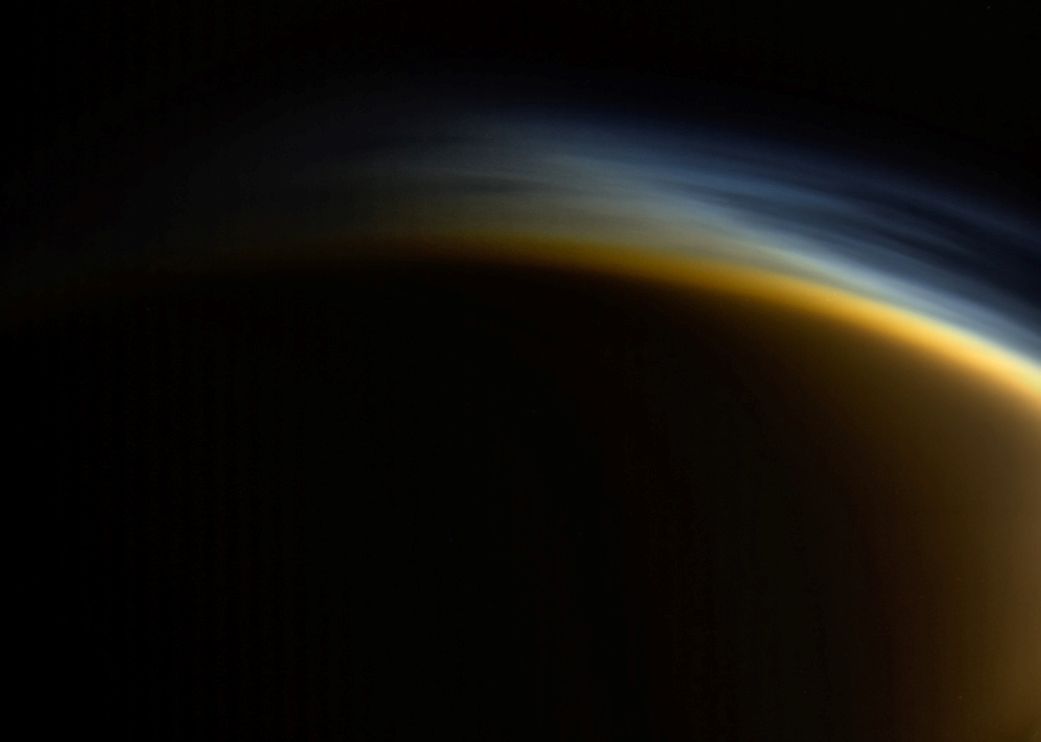
Usually, the postcards stop after a journey ends, but not so for robotic adventurer Cassini, whose epic journey exploring Saturn and its neighbors finished in September. The Cassini Imaging Central Laboratory for Operations, or CICLOPS, is still making its way through the wealth of data the spacecraft sent back to Earth, continuing almost two decades of work.
Take, for example, this photograph, which the spacecraft originally captured on March 31, 2005. At the time, Cassini was 20,556 miles away from Titan, gazing at the moon's north pole. As the moon slowly rotates, turning just once every 16 Earth days, the sun makes Titan's haze appear to glow, showing off the incredible layers in the moon's atmosphere. It's a unique view: Titan is the only moon in our solar system with an atmosphere, like that which blankets Earth—although on Titan, it is made up of clouds of methane and other carbon compounds.
As beautiful as Titan's haze is, it doesn't overshadow the view to the moon's surface. When Cassini launched, it brought a probe called Huygens to the moon's surface to augment the space-based observations. Between the two spacecraft, scientists have pieced together a shockingly Earth-like picture of lakes and seas—albeit filled with liquid methane—on Titan.
But Titan's unique atmosphere, which scientists suspect could contain the building blocks of life, is part of the reason why the Cassini mission had to come to such a bitter end. The spacecraft was sent into Saturn's atmosphere to burn up in order to make sure nothing from Earth—and potentially contaminated with Earthen cooties—made its way to potentially habitable worlds in the neighborhood, like Titan and its fellow moon Enceladus.
But scientists are eager to make sure that Cassini's postcards aren't the last images we receive of this mysterious moon. In December, NASA announced that it was funding continued development of a project called Dragonfly, which hopes to launch a robot to Titan's surface by the end of 2025.
If it becomes a reality, the Dragonfly mission would traverse the moon by making hour-long hop-like flights between sightseeing stops, studying the moon's surface, geology and atmosphere. And, of course, it would have its eyes peeled at all times for any signs that all that hydrocarbon and water have produced the alchemy we know as life.
Uncommon Knowledge
Newsweek is committed to challenging conventional wisdom and finding connections in the search for common ground.
Newsweek is committed to challenging conventional wisdom and finding connections in the search for common ground.
About the writer
Meghan Bartels is a science journalist based in New York City who covers the science happening on the surface of ... Read more
To read how Newsweek uses AI as a newsroom tool, Click here.








